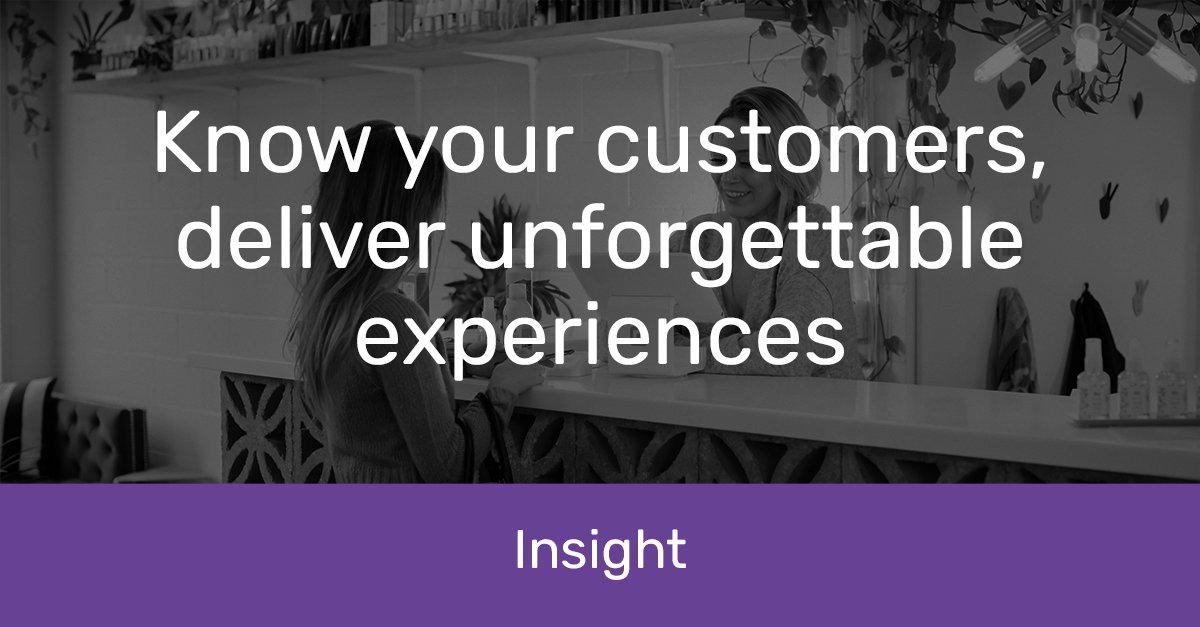
Know your customers, deliver unforgettable experiences
Analyse and use your data to make targeted improvements to customer experience
In today’s digital world, it takes consumers mere seconds to find a plethora of choices, and if your customer experience isn’t up to scratch, it’s not hard for them to find an alternative. Customer satisfaction drives customer experience, and it’s worth its weight in gold. But ensuring customer satisfaction is another ball game.
Every organisation is different, as is every customer, which means a one-size-fits-all approach isn’t going to cut the mustard. You can hire the best, most friendly people, streamline operations, be transparent and fix your mistakes so customers feel heard and appreciated, but none of that guarantees an outstanding customer experience for your customers.
There are ways to get a better read of your customers and how to tailor your strategies accordingly – and the answer is in your data analytics.
Traditional customer satisfaction metrics
For nearly two decades, the net promoter score (NPS) has been widely viewed as the defining metric for measuring customer experience. The problem is that NPS is typically measured after the fact. In other words, if customers’ experiences are poor, there’s not much you can do to change their minds at that point. Furthermore, metrics like NPS focus mainly on the efficiency and effectiveness of the business, rather than the quality of customer experience.
How to leverage your data to enhance customer experience
Gain a true and deep understanding of your customer base
Be honest – how well do you actually know your customer base?
To deliver the best possible customer experience, you first must know more about your customers beyond their age, gender, location and demographic information (although these are essential). What are their values, online behaviours and shopping habits, and what ultimately drives their purchasing decisions? Consider how, when and why they interact with your company, and through which channels.
Once you understand who your customers are, you can start to gather information about customer experience – and where improvements are needed.
The art of customer segmentation
Customer segmentation analysis allows you to take a deep dive into your data and isolate individual customers (also known as ‘creating a single customer view’). You can begin by breaking up your customer base into smaller groups that share similarities based on the customer qualities that are most important to your business – for example, transactions, age, location, gender, buying patterns and more.
For more in-depth information, check out our Guide to Customer Segmentation.
Use that data to deliver personalised experiences
Research has shown that personalised buying experiences greatly improve customer experience, with one survey showing that 91% of consumers are more likely to shop with brands that recognise, remember and provide them with relevant offers and recommendations.
Map and analyse customer profiles
When you’ve segmented your data and have created single customer views, you can use this data analysis to inform and deploy personalised marketing campaigns targeted specifically at various sections of your customer base.
Creating qualitative customer ‘profiles’ for each of the segments will enable marketing teams to determine exactly what messaging and content are best for each customer group, and offer an experience that meets those expectations while always staying on brand.
For example, as a retailer, you might identify a segment of customers that haven’t purchased anything in five weeks (which is abnormal for your unique business). You could send an email offer to these customers, tailored specifically to individuals based on their transaction history (such as a ‘buy one get one free’ promotion on the last item they purchased).
Data-driven insights can be used across the business too
Best-in-class companies that deliver a competitive customer experience don’t keep their data analysis in silos. Every department within an organisation touches the customer at some point. For example, purchase data can inform new product development and levels of production, and it can help forecast earnings based on spend patterns.
Turn customer data into actionable insights
Improved customer experience might be the goal, but to get there requires leveraging the right data from multiple channels, integrated to give you a full picture of the customer journey. It’s one of the most comprehensive and complicated areas of analytics and there’s a myriad of solutions that fall under the umbrella of ‘customer experience’.
At Datamine, we’re experts in helping businesses better understand their customers (by analysing their data), and then integrating seamless solutions that enable great customer experience. Get in touch with us today.















































